
San Juan: The Vibrant Heart of Puerto Rico
Discover San Juan, Puerto Rico’s historic capital with vibrant nightlife, stunning beaches, lush parks, and a diverse culinary scene. Experience the perfect blend of old and new.
San Juan, the capital of Puerto Rico, is a city that blends old-world charm with modern vitality. Founded in 1521, it is one of the oldest cities in the Americas, and its historic district, Old San Juan, is a testament to its rich past. Wandering through its cobblestone streets, you will find colorful colonial buildings, centuries-old forts, and beautiful plazas. The city's history is palpable and offers a unique glimpse into the past. Beyond its historical allure, San Juan boasts stunning beaches, lush parks, and a vibrant nightlife. Condado and Isla Verde are popular spots where you can relax on the sandy shores or enjoy water sports. For nature lovers, the San Juan Bay Estuary and the nearby El Yunque National Forest provide a refreshing escape into the island's natural beauty. San Juan is also a culinary hub, where traditional Puerto Rican cuisine meets international flavors. From street food vendors to upscale restaurants, the city's food scene is diverse and delicious. Don't miss trying local favorites like mofongo, tostones, and fresh seafood. In the evenings, the city comes alive with music and dance, especially in the lively areas of La Placita and Santurce.
Local tips in San Juan
- Wear comfortable shoes; the cobblestone streets of Old San Juan can be uneven.
- Visit El Morro and Castillo San Cristóbal early in the day to avoid crowds.
- Try the local street food; it is both delicious and affordable.
- Use sunscreen and stay hydrated, especially when exploring outdoor attractions.
- Take a ferry to visit the nearby islands of Culebra and Vieques for pristine beaches.
- Learn a few basic Spanish phrases; it will enhance your interaction with locals.
- Check out the local art scene in Santurce, which features many galleries and murals.
Neighbourhoods in San Juan
San Juan: The Vibrant Heart of Puerto Rico
San Juan, the capital of Puerto Rico, is a city that blends old-world charm with modern vitality. Founded in 1521, it is one of the oldest cities in the Americas, and its historic district, Old San Juan, is a testament to its rich past. Wandering through its cobblestone streets, you will find colorful colonial buildings, centuries-old forts, and beautiful plazas. The city's history is palpable and offers a unique glimpse into the past. Beyond its historical allure, San Juan boasts stunning beaches, lush parks, and a vibrant nightlife. Condado and Isla Verde are popular spots where you can relax on the sandy shores or enjoy water sports. For nature lovers, the San Juan Bay Estuary and the nearby El Yunque National Forest provide a refreshing escape into the island's natural beauty. San Juan is also a culinary hub, where traditional Puerto Rican cuisine meets international flavors. From street food vendors to upscale restaurants, the city's food scene is diverse and delicious. Don't miss trying local favorites like mofongo, tostones, and fresh seafood. In the evenings, the city comes alive with music and dance, especially in the lively areas of La Placita and Santurce.
When is the best time to go to San Juan?
Iconic landmarks you can’t miss
San Juan National Historic Site
Discover the historical significance and scenic beauty of San Juan National Historic Site, a captivating journey through Puerto Rico's past.
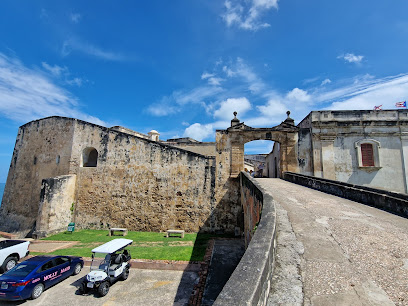
Castillo San Felipe del Morro
Explore Castillo San Felipe del Morro, a historic fortress in San Juan, Puerto Rico, offering breathtaking views and rich colonial history.
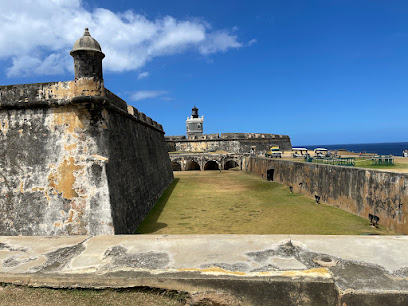
Castillo San Cristóbal
Discover Castillo San Cristóbal, a historic fortress in San Juan, offering stunning views and a deep dive into Puerto Rico's colonial history.
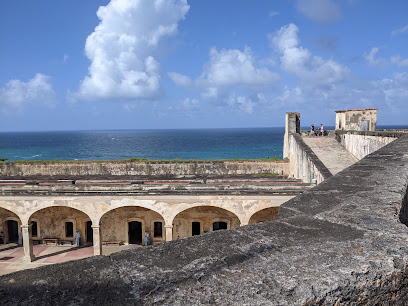
Plaza Colón
Explore Plaza Colón, a vibrant monument in San Juan rich in history, culture, and stunning architecture – a must-see for every traveler.
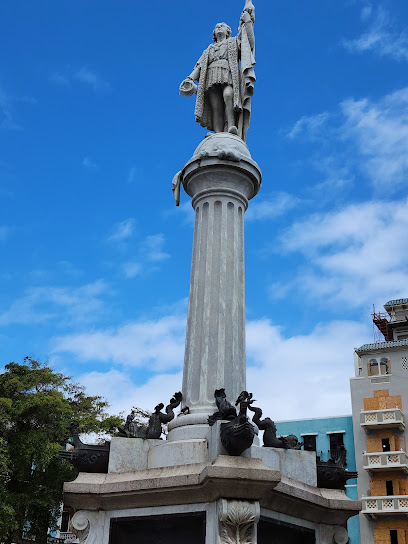
Parque de las Palomas
Explore the enchanting Parque de las Palomas in San Juan, Puerto Rico – a serene park famous for its free-roaming doves and lush landscapes.

Puerta de San Juan
Discover the historic Puerta de San Juan, a stunning landmark that reveals the rich colonial history of Puerto Rico.
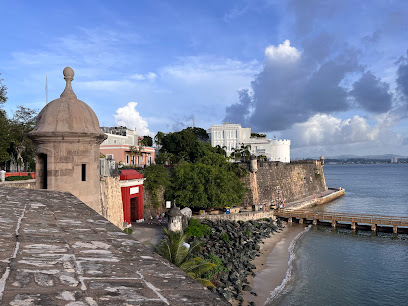
Plaza Dársena - Plaza de la Marina
Explore the beauty and culture of Plaza Dársena, a vibrant state park in San Juan that showcases stunning architecture and waterfront views.

Plaza de Armas
Experience the vibrant culture and rich history of San Juan at Plaza de Armas, a lively hub for tourists and locals alike.
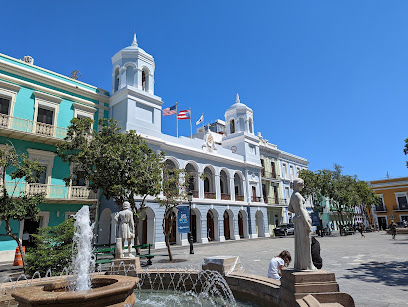
Walkway of the Presidents
Explore the Walkway of the Presidents in San Juan, a historical landmark celebrating influential figures and Puerto Rico's vibrant culture amidst scenic beauty.
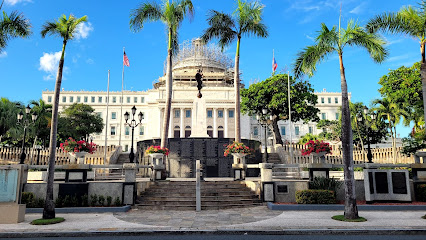
Puente Dos Hermanos
Discover the breathtaking views and architectural beauty of Puente Dos Hermanos, a must-see bridge in San Juan, Puerto Rico, perfect for leisurely walks and cycling.
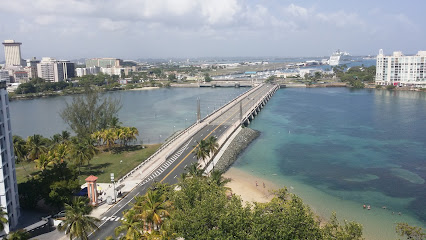
Las Americas Museum
Discover the rich cultural heritage of the Caribbean at Las Americas Museum, showcasing art and history from pre-Columbian times to the present.
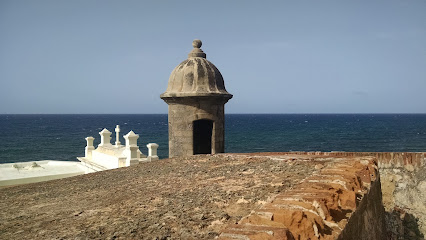
Casa Blanca
Discover the rich history and beauty of Casa Blanca, a historic museum in San Juan, Puerto Rico, showcasing the island's colonial heritage.

Paseo del Morro
Discover the stunning views and rich history at Paseo del Morro, a must-visit coastal pathway in San Juan, Puerto Rico.
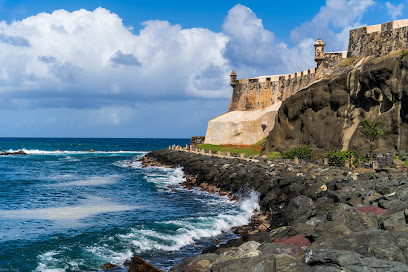
La Perla
Discover La Perla, a colorful historical neighborhood in San Juan, showcasing vibrant murals and captivating Caribbean views.

Museo del Mar
Explore the rich maritime history of Puerto Rico at Museo del Mar, featuring interactive exhibits, fascinating artifacts, and a charming gift shop.
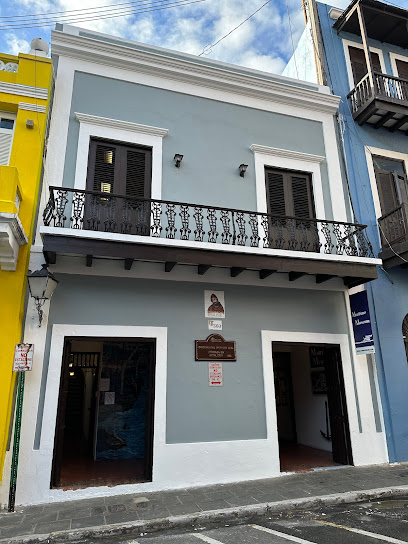
Unmissable attractions to see
Casa Natal de Sarmiento
Explore the Casa Natal de Sarmiento in San Juan - a historical museum celebrating the life of Argentina's great educator and reformer.
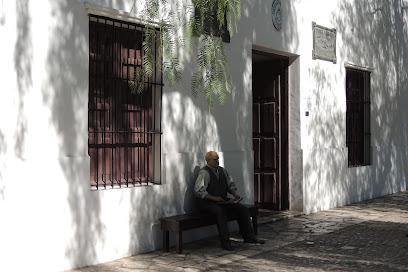
Auditorio Juan Victoria
Discover the artistic essence of San Juan at Auditorio Juan Victoria, a premier cultural center showcasing exceptional performances and events.
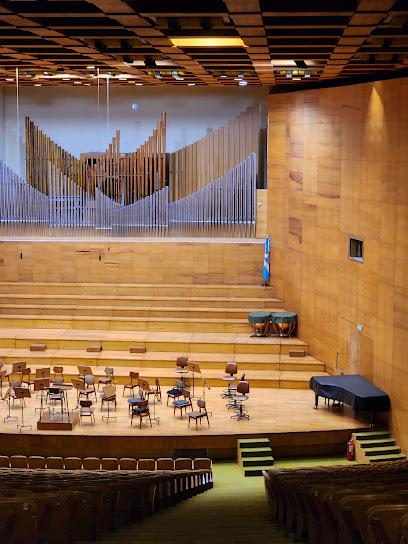
I Love PR Sign
Discover Puerto Rican pride at the I Love PR Sign, a vibrant symbol in San Juan perfect for iconic photographs and cultural immersion.
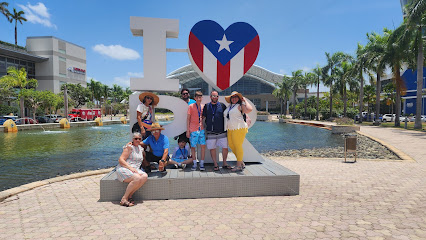
Vinas De Segisa
Discover the enchanting world of Argentine wine at Vinas De Segisa, where breathtaking views and exquisite tastings await every visitor.
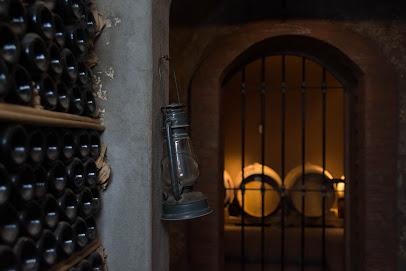
Bodega Fabril Alto Verde Organic Wine
Explore Bodega Fabril Alto Verde, where organic wines meet breathtaking landscapes in the heart of San Juan Province.
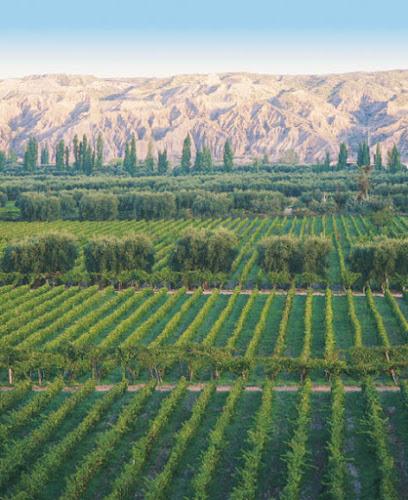
Federico Cantoni Park
Discover the tranquility and natural beauty of Federico Cantoni Park in Rivadavia, San Juan Province, a perfect getaway for nature lovers.
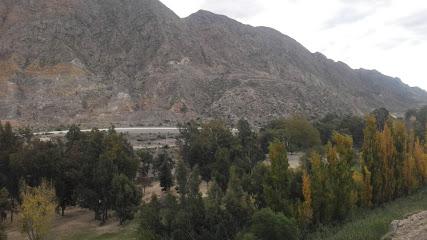
Anfiteatro Buenventura Luna
Discover the cultural heart of San Juan at Anfiteatro Buenaventura Luna, where art and community come together in stunning performances.

Agape Libros
Discover a serene retreat at Agape Libros, San Juan's charming religious book shop, perfect for spiritual seekers and book lovers alike.

Casa Rosa
Experience the vibrant history and charm of Casa Rosa, a historic landmark in the heart of San Juan, Puerto Rico.
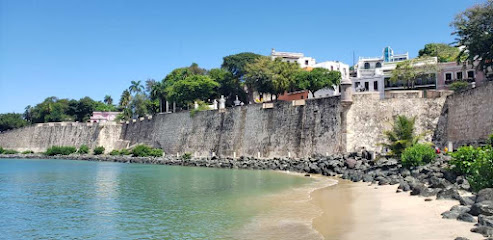
Santurce Art Walk
Discover the vibrant Santurce Art Walk in San Juan, Puerto Rico - a celebration of street art, local creativity, and cultural expression.
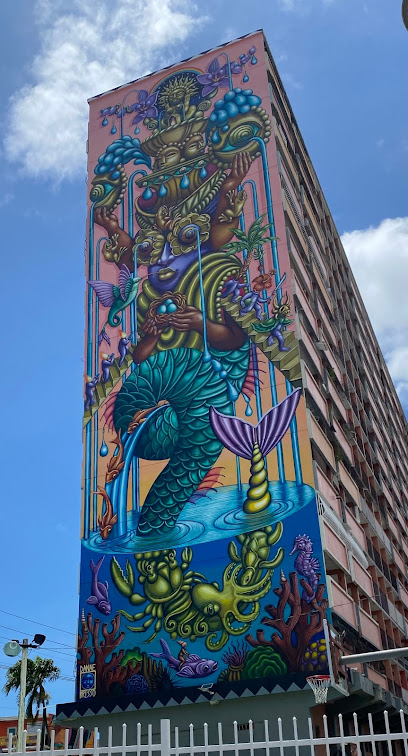
Fuente de la Herencia de las Américas
Explore the cultural heritage of Latin America at Fuente de la Herencia de las Américas in San Juan, a historical park adorned with stunning sculptures.
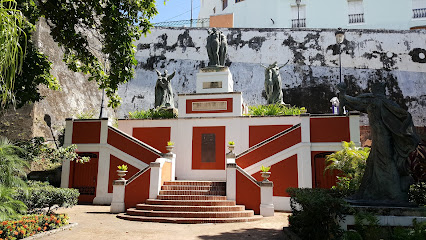
Playita Puerta de San Juan
Experience the serene charm of Playita Puerta de San Juan, a hidden gem where relaxation meets rich Puerto Rican history and culture.
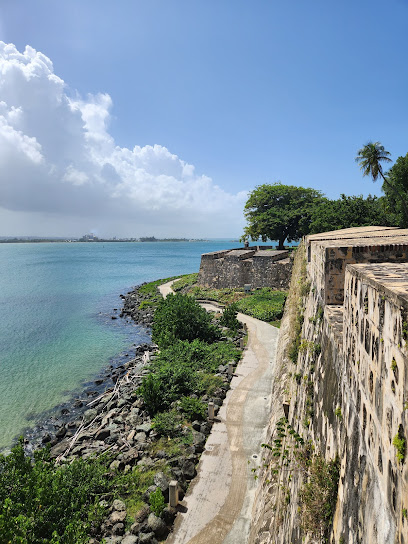
Cripta de la Catedral de San Juan
Explore the enchanting Cripta de la Catedral de San Juan, a serene haven of art and spirituality in the heart of San Juan Province.

La Estatua Viviente/ The Living Statue
Discover La Estatua Viviente, a breathtaking living statue in San Juan that embodies the vibrant artistry and culture of Puerto Rico.
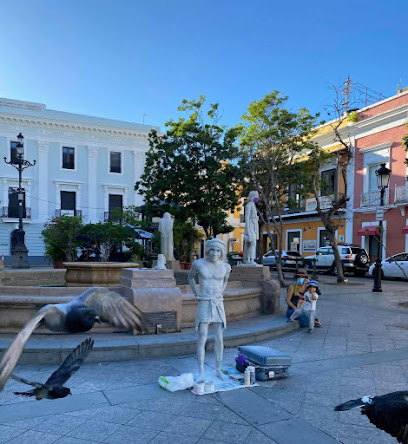
Floating Platform
Discover tranquility at the Floating Platform in San Juan, a stunning tourist attraction set in the lush Parque Isabel La Católica.
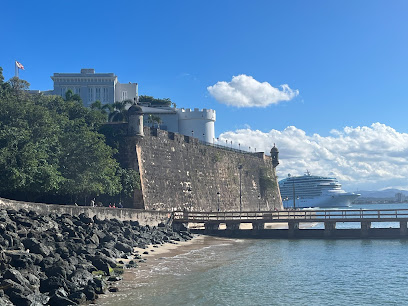
Essential places to dine
Restaurante Raíces
Experience authentic Puerto Rican cuisine at Restaurante Raíces in San Juan Antiguo—where every dish is a celebration of local flavors.
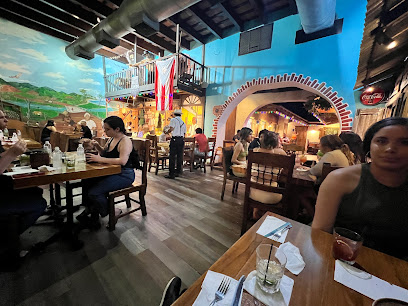
Barrachina
Experience authentic Puerto Rican cuisine at Barrachina in San Juan Antiguo - home of the original Piña Colada.
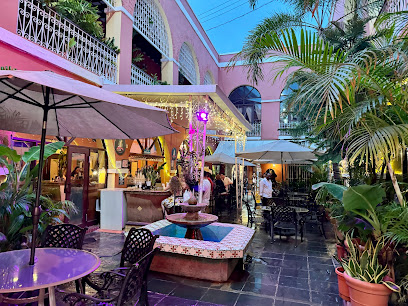
Fogo de Chão Brazilian Steakhouse
Experience the authentic taste of Brazil at Fogo de Chão in San Juan – where every meal is a celebration of flavor and tradition.

Ropa Vieja Grill
Experience authentic Puerto Rican flavors at Ropa Vieja Grill in Santurce, San Juan - a culinary delight for every traveler.
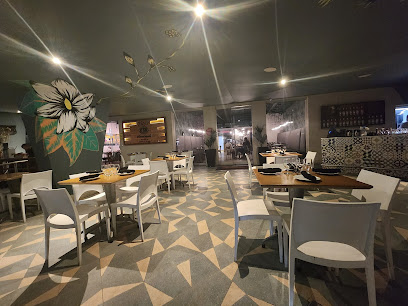
Serafina San Juan Restaurant
Discover authentic Italian cuisine at Serafina San Juan, where delicious pizza meets vibrant cocktails in an inviting atmosphere.
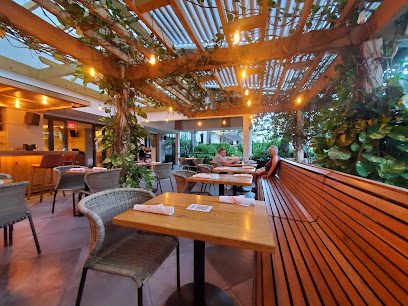
La Casita Blanca
Experience the authentic flavors of Puerto Rico at La Casita Blanca in San Juan – where tradition meets culinary excellence.
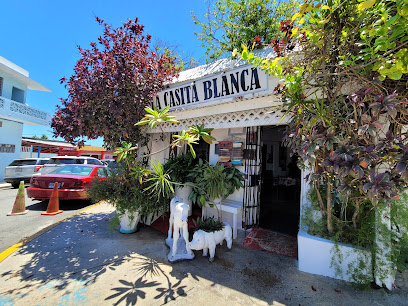
Vaca Brava - Old San Juan
Experience authentic Puerto Rican cuisine at Vaca Brava in Old San Juan – where tradition meets flavor.
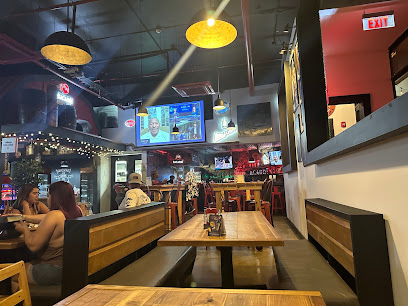
La Cueva del Mar | Calle Loíza
Discover authentic Caribbean seafood at La Cueva del Mar in San Juan's vibrant Santurce neighborhood - A must-visit culinary gem!
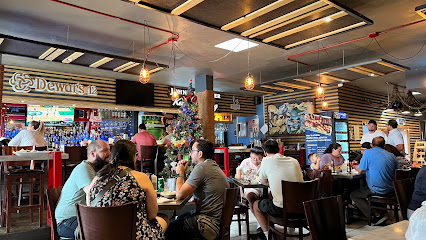
Casita Miramar
Savor the flavors of Puerto Rico at Casita Miramar – where tradition meets culinary creativity in San Juan.
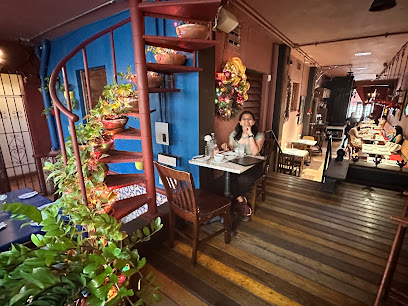
San Juan Smokehouse
Discover the best barbecue in San Juan at San Juan Smokehouse—where every bite tells a story.
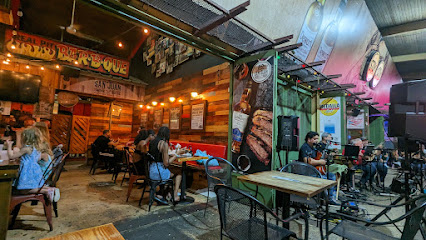
Metropol Restaurant
Discover authentic Caribbean cuisine at Metropol Restaurant in San Juan—an unforgettable culinary experience awaits you.
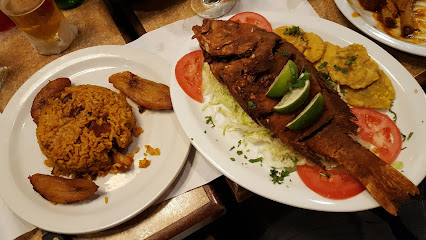
Deaverdura
Discover the essence of Puerto Rican flavors at Deaverdura - where tradition meets taste in every delightful dish.
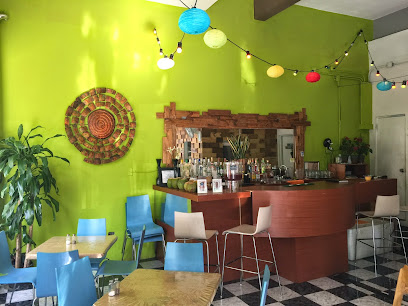
Orozcos Restaurant
Savor authentic Puerto Rican seafood and breakfast delights at Orozcos Restaurant in vibrant Santurce, San Juan.
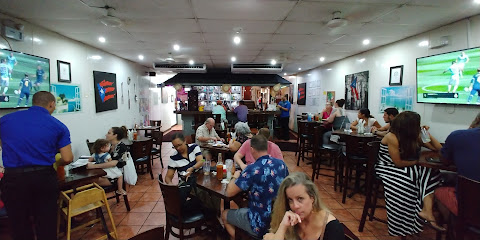
Princesa - Cocina Cultura
Experience authentic Puerto Rican cuisine at Princesa - Cocina Cultura, where tradition meets flavor in a charming setting.
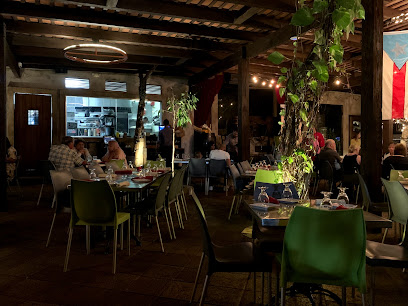
Marmalade
Experience exquisite dining at Marmalade in San Juan, where local flavors meet gourmet innovation in an enchanting atmosphere.
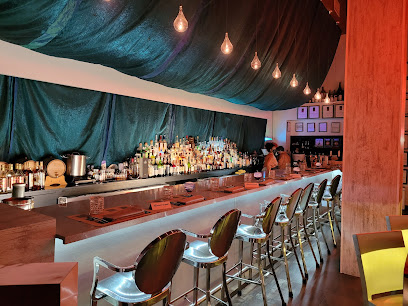
Markets, malls and hidden boutiques
Plaza Las Américas
Discover endless shopping, dining, and entertainment at Plaza Las Américas, the Caribbean's largest shopping destination in San Juan.
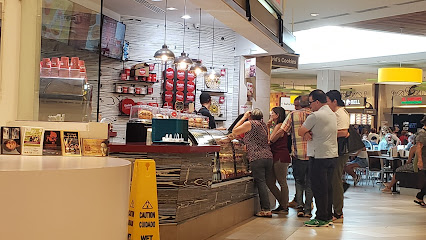
The Mall of San Juan
Explore the luxurious shopping, gourmet dining, and vibrant entertainment at The Mall of San Juan, Puerto Rico's premier shopping destination.
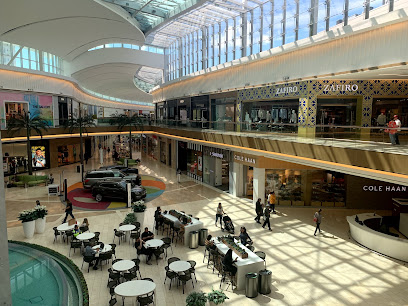
Puerto Rican Art & Crafts
Discover the essence of Puerto Rican culture at Puerto Rican Art & Crafts, a treasure trove of local artistry and craftsmanship in San Juan.
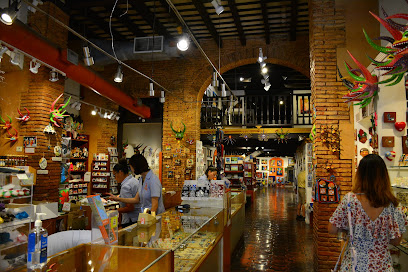
Marfil Store
Discover Puerto Rican fashion at Marfil Store in Viejo San Juan—your ultimate shopping destination for unique clothing and accessories.

Urban Outfitters
Explore Urban Outfitters in San Juan for trendy clothing, unique accessories, and chic home goods that capture the essence of modern fashion.
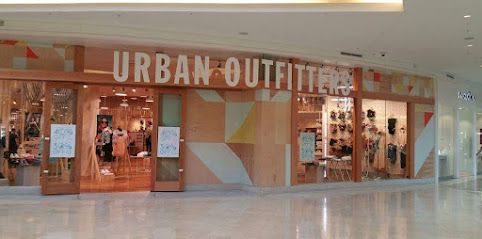
Cosas de Ayer y Hoy
Explore the nostalgic charm of Cosas de Ayer y Hoy, a San Juan antique store filled with vintage treasures and unique finds.
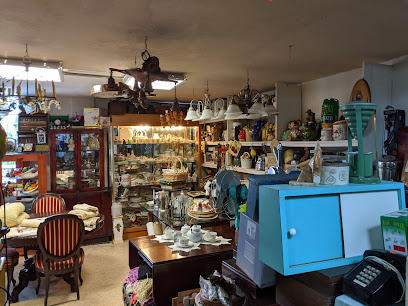
La Calle Mall
Explore the vibrant artistic culture of Puerto Rico at La Calle Mall, a unique destination for handicrafts and local art in San Juan.
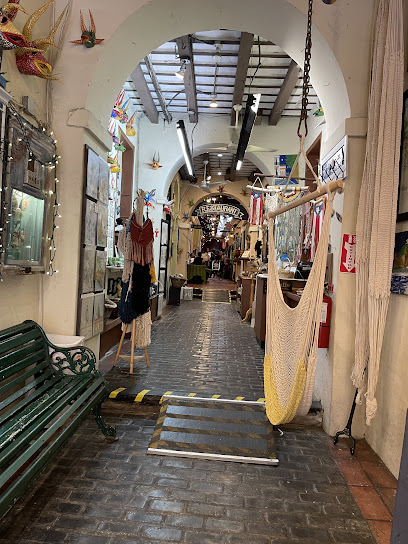
El POP Santurce
Discover the vibrant culture of Puerto Rico at El POP Santurce, a lively market filled with local goods, artisanal treasures, and retro charm.
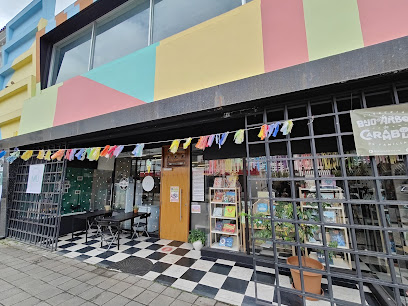
Mariel Arts & Crafts / Souvenirs Old San Juan
Explore Mariel Arts & Crafts in Old San Juan for unique Puerto Rican souvenirs, handcrafted jewelry, and vibrant local artistry.

Souvenir Outlet Puerto Rico
Explore Souvenir Outlet Puerto Rico for authentic gifts, clothing, and crafts that celebrate the island's vibrant culture and heritage.
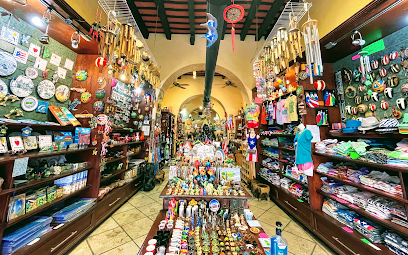
Silhouette Boutique
Discover unique women’s fashion and accessories at Silhouette Boutique in San Juan, where style meets charm in a welcoming atmosphere.
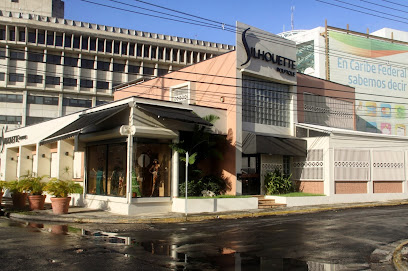
Pure Soul Boutique
Discover unique fashion and local crafts at Pure Soul Boutique, where the charm of San Juan meets modern artistry.
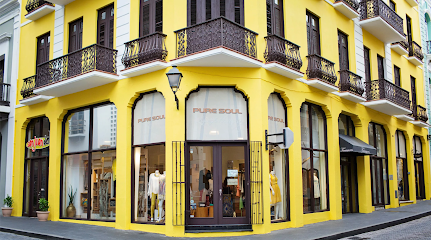
Gul Plaza - Souvenir Store
Discover the essence of Puerto Rico at Gul Plaza, your go-to destination for unique souvenirs and local treasures in San Juan's Santurce district.
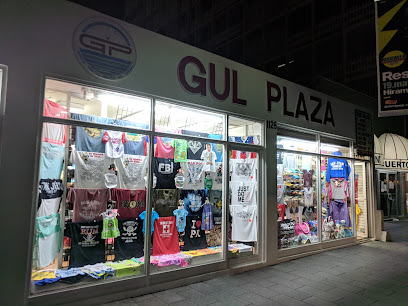
Valija - Viejo San Juan
Explore Valija in Viejo San Juan, where fashion meets local artistry in a stylish women's clothing store offering unique finds and accessories.

Ecléctica
Explore Ecléctica in San Juan: A boutique showcasing the creativity and craftsmanship of Puerto Rican artisans with a unique shopping experience.
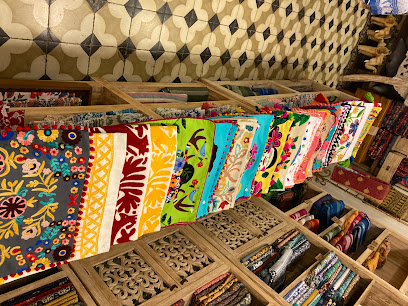
Essential bars & hidden hideouts
La Factoría
Experience the vibrant nightlife of San Juan at La Factoría, where innovative cocktails and a lively atmosphere await your arrival.
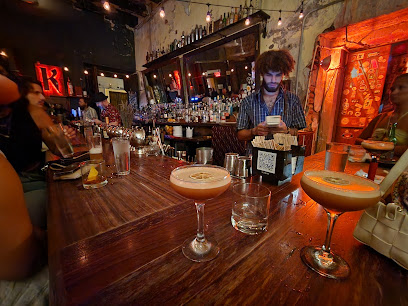
Los 3 Cuernos
Experience the vibrant nightlife at Los 3 Cuernos in San Juan, where delicious cocktails and a lively atmosphere await you.
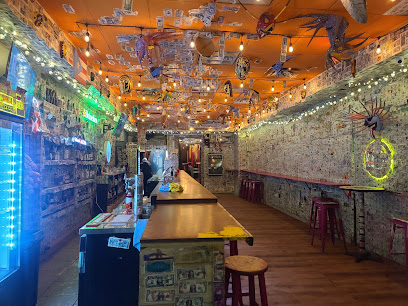
El Nie Bar
Experience the vibrant nightlife of San Juan at El Nie Bar, where exquisite cocktails and lively dancing await you in a welcoming atmosphere.
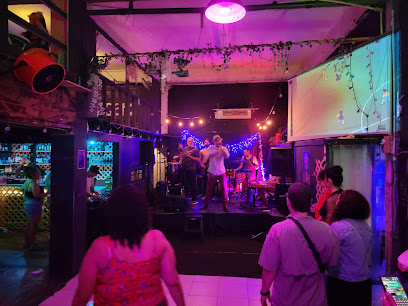
Nono's
Experience the vibrant nightlife at Nono's, a lively bar in historic San Juan offering an array of cocktails and a welcoming atmosphere.
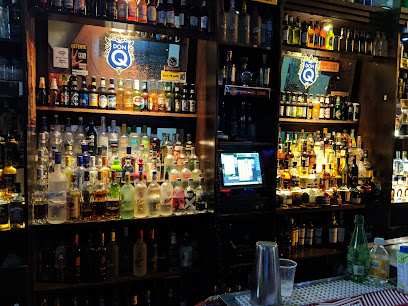
La Penúltima
Experience the vibrant nightlife at La Penúltima, where creative cocktails and local culture come together in the heart of San Juan.
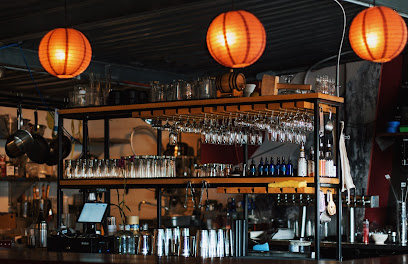
JungleBird
Discover JungleBird in San Juan: a cocktail bar where tropical flavors meet vibrant nightlife for an unforgettable experience.
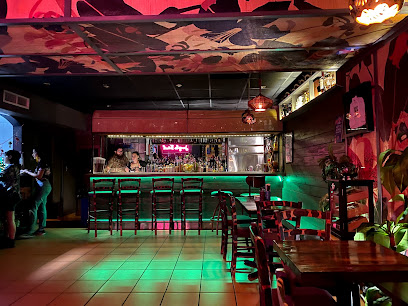
El Batey Bar
Experience the vibrant charm of El Batey Bar in San Juan - a historical bar serving authentic Puerto Rican drinks and lively atmosphere for all.
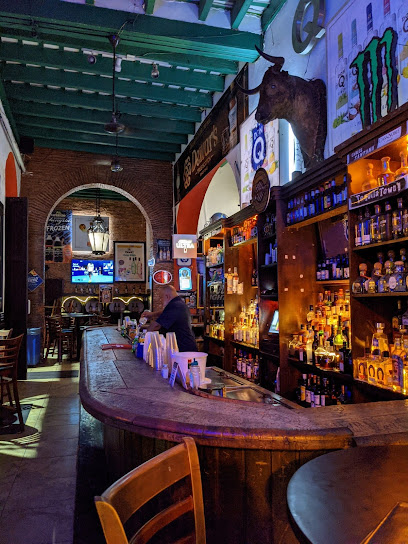
The Mezzanine
Discover a vibrant cocktail experience at The Mezzanine, a stylish bar in the heart of San Juan, where innovative drinks and local culture converge.
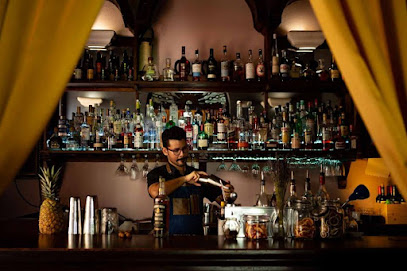
Piso Viejo Bar & Restaurant
Discover the lively Piso Viejo Bar & Restaurant in San Juan, a perfect blend of delicious food, cocktails, and live entertainment.
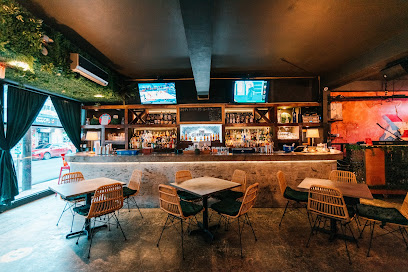
Antiguo 26
Discover the vibrant cocktail culture and exquisite tapas at Antiguo 26, a must-visit bar in the heart of San Juan.
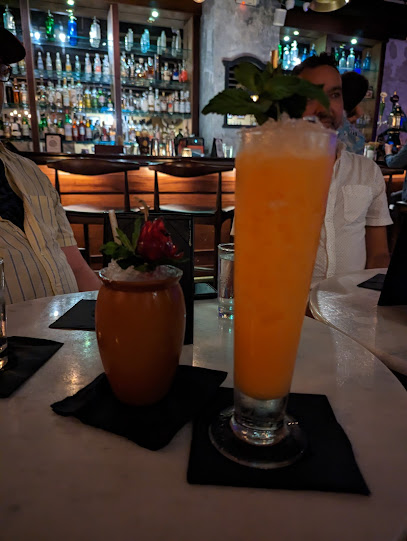
Aguardiente Bar
Experience the vibrant nightlife of San Juan at Aguardiente Bar, the ultimate destination for cocktails and camaraderie in Santurce.
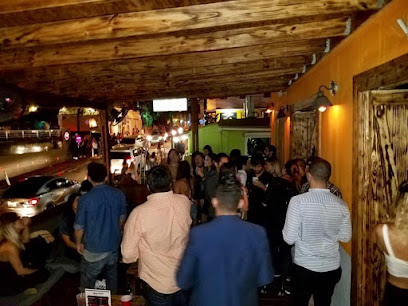
Patrick's Irish Bar
Discover the vibrant ambiance and unique fusion of Irish and Caribbean cultures at Patrick's Irish Bar in Santurce, San Juan.

Al Fresco Rooftop Wine Bar
Experience exquisite wines and stunning views at Al Fresco Rooftop Wine Bar in San Juan, the perfect spot for relaxation and culinary delight.
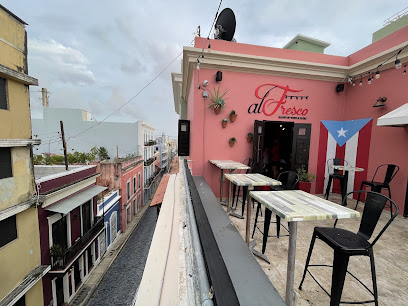
The Red Monkey
Discover the vibrant nightlife of San Juan at The Red Monkey, a lively bar offering a mix of local and international drinks in a welcoming atmosphere.
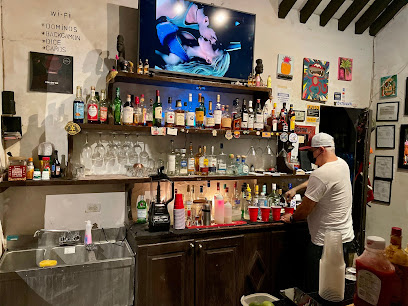
Bar La Unidad
Experience the lively nightlife of San Juan at Bar La Unidad, where vibrant cocktails and a welcoming atmosphere await you.
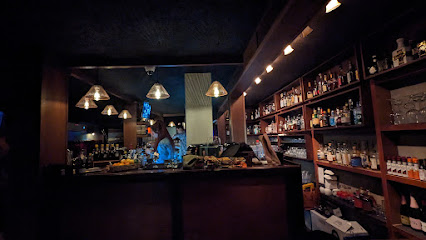
Local Phrases
-
- HelloHola
[oh-lah] - GoodbyeAdiós
[ah-dee-ohs] - YesSí
[see] - NoNo
[noh] - Please/You're welcomePor favor/De nada
[pohr fah-bohr/deh nah-dah] - Thank youGracias
[grah-see-ahs] - Excuse me/SorryPerdón/Lo siento
[pehr-dohn/loh see-ehn-toh] - How are you?¿Cómo estás?
[koh-moh ehs-tahs] - Fine. And you?Bien. ¿Y tú?
[byehn. ee too] - Do you speak English?¿Hablas inglés?
[ah-blahs een-glehs] - I don't understandNo entiendo
[noh ehn-tee-ehn-doh]
- HelloHola
-
- I'd like to see the menu, pleaseQuisiera ver el menú, por favor
[kee-syeh-rah behr ehl meh-noo, pohr fah-bohr] - I don't eat meatNo como carne
[noh koh-moh kahr-neh] - Cheers!¡Salud!
[sah-loohd] - I would like to pay, pleaseQuisiera pagar, por favor
[kee-syeh-rah pah-gahr, pohr fah-bohr]
- I'd like to see the menu, pleaseQuisiera ver el menú, por favor
-
- Help!¡Ayuda!
[ah-yoo-dah] - Go away!¡Vete!
[veh-teh] - Call the Police!¡Llama a la policía!
[yah-mah ah lah poh-lee-see-ah] - Call a doctor!¡Llama a un médico!
[yah-mah ah oon meh-dee-koh] - I'm lostEstoy perdido/a
[ehs-toy pehr-dee-doh/dah] - I'm illEstoy enfermo/a
[ehs-toy ehn-fehr-moh/dah]
- Help!¡Ayuda!
-
- I'd like to buy...Quisiera comprar...
[kee-syeh-rah kohm-prahr] - I'm just lookingSolo estoy mirando
[soh-loh ehs-toy mee-rahn-doh] - How much is it?¿Cuánto cuesta?
[kwan-toh kwehs-tah] - That's too expensiveEsto es demasiado caro
[ehs-toh ehs deh-mah-syah-doh kah-roh] - Can you lower the price?¿Puedes bajar el precio?
[pweh-dehs bah-hahr ehl preh-syoh]
- I'd like to buy...Quisiera comprar...
-
- What time is it?¿Qué hora es?
[keh oh-rah ehs] - It's one o'clockEs la una
[ehs lah oo-nah] - Half past (10)Media (10)
[meh-dee-ah (deez ee ocho)] - MorningMañana
[mah-nyah-nah] - AfternoonTarde
[tahr-deh] - EveningNoche
[noh-cheh] - YesterdayAyer
[ah-yehr] - TodayHoy
[oy] - TomorrowMañana
[mah-nyah-nah] - 1Uno
[oo-noh] - 2Dos
[dohs] - 3Tres
[trehs] - 4Cuatro
[kwah-troh] - 5Cinco
[seeng-koh] - 6Seis
[sehs] - 7Siete
[syeh-teh] - 8Ocho
[oh-choh] - 9Nueve
[nweh-veh] - 10Diez
[dyehs]
- What time is it?¿Qué hora es?
-
- Where's a/the...?¿Dónde está...?
[dohn-deh ehs-tah] - What's the address?¿Cuál es la dirección?
[kwal ehs lah dee-rehk-syon] - Can you show me (on the map)?¿Puedes mostrarme (en el mapa)?
[pweh-dehs mohs-trar-meh (ehn ehl mah-pah)] - When's the next (bus)?¿Cuándo es el próximo (autobús)?
[kwan-doh ehs ehl proh-ksy-moh (ow-toh-boos)] - A ticket (to ....)Un boleto (para ...)
[oon boh-leh-toh (pah-rah)]
- Where's a/the...?¿Dónde está...?
History of San Juan
-
San Juan, the capital of Puerto Rico, was founded by Spanish colonists in 1521. Originally named Ciudad de Puerto Rico, it served as a key port and gateway to the New World for Spain. The city is one of the oldest European-established settlements in the Americas.
-
In response to various foreign threats, the Spanish Crown built extensive fortifications in San Juan during the 16th and 17th centuries. The most notable structures include Castillo San Felipe del Morro and Castillo San Cristóbal. These forts played crucial roles in defending the city from numerous attacks, including those by Sir Francis Drake in 1595 and the Dutch in 1625.
-
In 1797, the British attempted to seize San Juan as part of their broader strategy to control the Caribbean. Led by Sir Ralph Abercromby, British forces landed on the island but were repelled by the Spanish defenders. The victory solidified San Juan's strategic importance and bolstered the morale of its inhabitants.
-
In 1898, during the Spanish-American War, the United States launched an offensive to capture Puerto Rico, including San Juan. After brief military engagements, Spain ceded Puerto Rico to the United States under the Treaty of Paris. This marked a significant shift in the island's political landscape, as it transitioned from Spanish to American control.
-
The Jones Act, passed by the United States Congress in 1917, granted U.S. citizenship to Puerto Ricans. This legislation had a profound impact on San Juan, fostering closer economic and cultural ties with the mainland United States. It also laid the groundwork for the island's political and social transformations in the 20th century.
-
During the mid-20th century, San Juan underwent significant industrialization and modernization through a series of economic initiatives known as Operation Bootstrap. Spearheaded by Puerto Rican Governor Luis Muñoz Marín, this program aimed to transform the island's economy from agriculture-based to manufacturing and tourism-driven. San Juan emerged as a vibrant metropolitan hub as a result.
-
In the 21st century, San Juan has evolved into a dynamic blend of historical charm and modernity. The city boasts a rich cultural tapestry influenced by its Spanish, African, and Taino heritage. Landmarks such as Old San Juan, with its cobblestone streets and colorful colonial buildings, juxtapose against the bustling urban areas and beachfront resorts, making it a unique destination.
San Juan Essentials
-
San Juan is accessible via the Luis Muñoz Marín International Airport (SJU), which is about 15 minutes from the city center. Direct flights are available from major cities in the U.S., Europe, and Latin America. Cruise ships also frequently dock at the San Juan Port, making it a popular stop for Caribbean cruises. Alternatively, ferries from other parts of Puerto Rico can bring you to San Juan.
-
San Juan offers various transportation options including taxis, ride-sharing services, and public buses. The 'AMA' bus system operates throughout the city and is an affordable way to get around. Taxis are readily available but ensure they are licensed. Renting a car is another option, especially if you plan to explore beyond the city. For a more local experience, consider using the Tren Urbano, a rapid transit system that serves the metropolitan area.
-
The official currency in Puerto Rico is the U.S. Dollar (USD). Credit and debit cards are widely accepted in hotels, restaurants, and shops. ATMs are easily found throughout San Juan. While tipping is not mandatory, it is customary to leave a tip of 15-20% in restaurants and for other services.
-
San Juan is generally safe for tourists, but it is advisable to stay vigilant. Avoid walking alone at night in less populated areas, such as La Perla neighborhood and parts of Santurce, which have higher crime rates. Stick to well-lit and crowded areas, especially after dark. Keep your belongings secure and be cautious of pickpockets in crowded places.
-
In case of an emergency, dial 911 for immediate assistance. The city has well-equipped hospitals and clinics. The main hospital, Centro Médico, is located in the nearby municipality of Río Piedras. Pharmacies are widespread and can provide over-the-counter medications. It's recommended to have travel insurance that covers medical emergencies.
-
Fashion: Do dress comfortably but neatly; avoid overly casual or revealing attire, especially when visiting churches. Religion: Do respect religious customs; remove hats and speak softly when visiting churches. Public Transport: Do have small change ready for buses; don't eat or drink on public transportation. Greetings: Do greet people with a polite 'Buenos días' (Good morning) or 'Buenas tardes' (Good afternoon); don't ignore local customs of politeness. Eating & Drinking: Do try the local cuisine and be open to new flavors; don't refuse an invitation to share a meal, as it is considered impolite.
-
To experience San Juan like a local, visit the Mercado de Santurce to sample fresh produce and local delicacies. Take a stroll through the colorful streets of Old San Juan and enjoy its vibrant atmosphere. Engage with locals, as they are generally friendly and eager to share their culture. Don't miss the chance to attend a local festival or event, such as the San Sebastián Street Festival, for a unique cultural experience.
Trending Landmark in San Juan
-
San Juan National Historic Site
-
Castillo San Felipe del Morro
-
Castillo San Cristóbal
-
Plaza Colón
-
Parque de las Palomas
-
Puerta de San Juan
-
Plaza Dársena - Plaza de la Marina
-
Plaza de Armas
-
Walkway of the Presidents
-
Puente Dos Hermanos
-
Las Americas Museum
-
Casa Blanca
-
Paseo del Morro
-
La Perla
-
Museo del Mar
Nearby Cities to San Juan
-
Things To Do in Mendoza
-
Things To Do in Santiago
-
Things To Do in La Serena
-
Things To Do in Coquimbo
-
Things To Do in Viña del Mar
-
Things To Do in Valparaíso
-
Things To Do in San Rafael
-
Things To Do in Rancagua
-
Things To Do in Córdoba
-
Things To Do in Curicó
-
Things To Do in San Miguel de Tucumán
-
Things To Do in Concepción
-
Things To Do in Rosario
-
Things To Do in Salta
-
Things To Do in Temuco
















